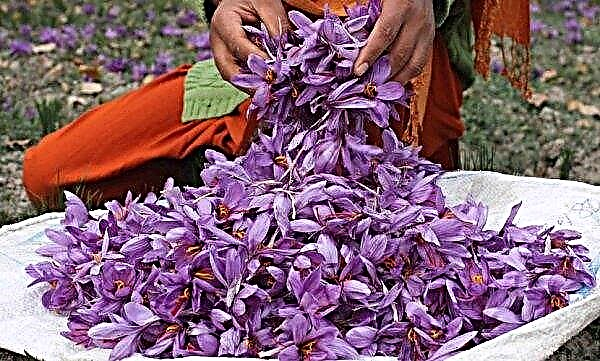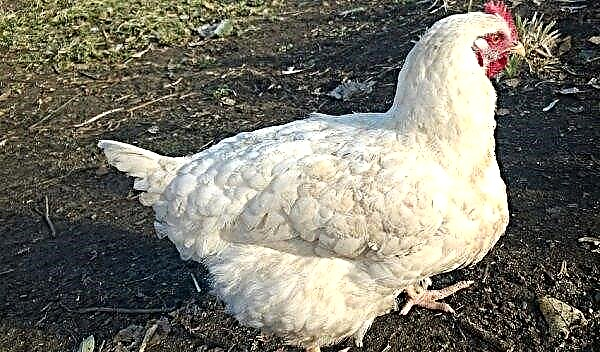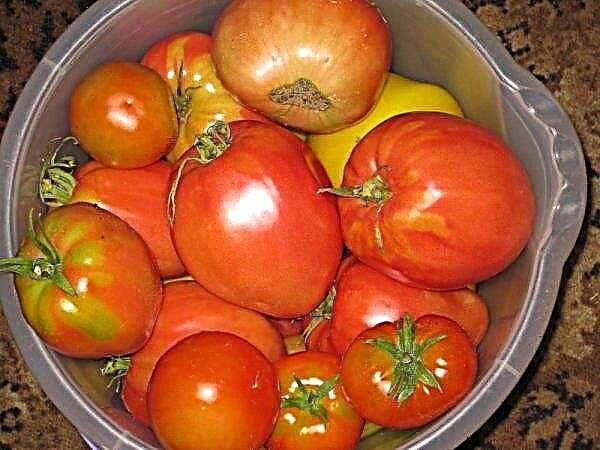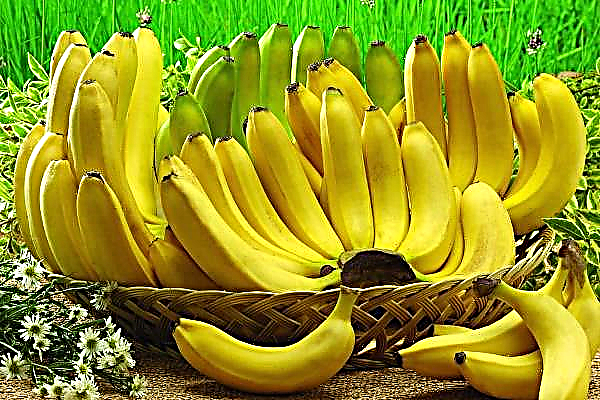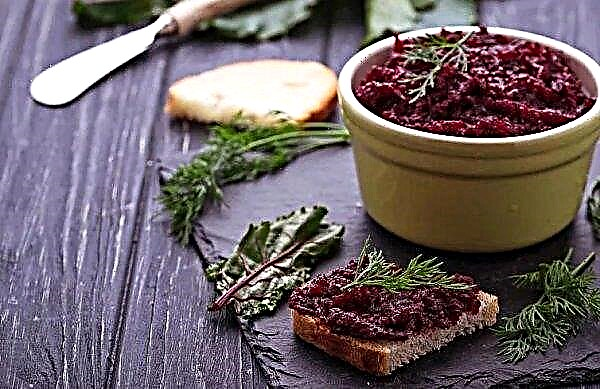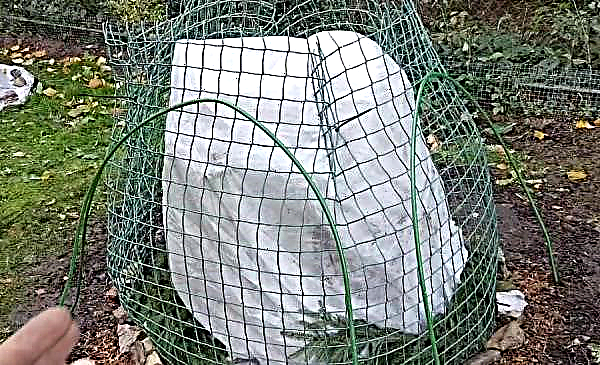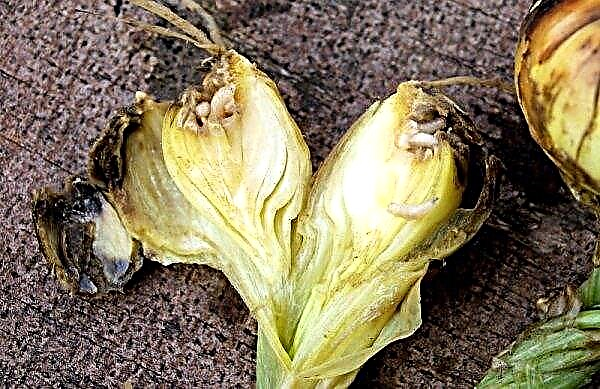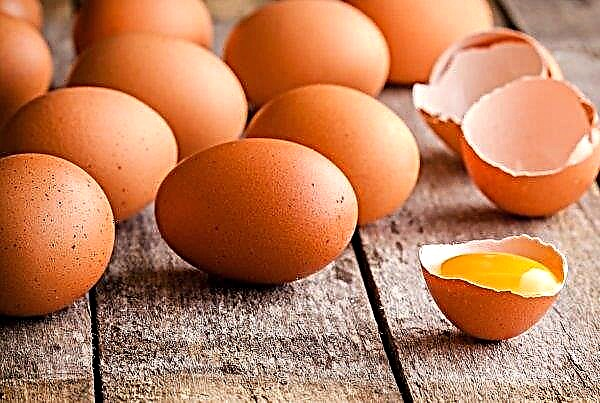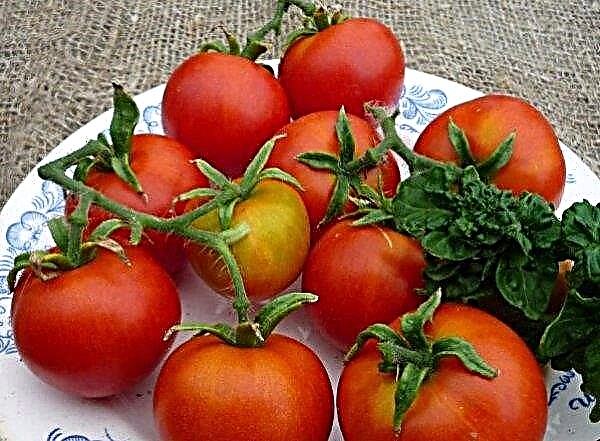Among the various varieties of white cabbage, the high-yielding hybrid Krautkaiser with medium-late vegetation periods stands out for its special characteristics. The culture is quite demanding in care, however, subject to basic agricultural practices, it can please gardeners with stable crops of large and succulent heads.
History of Variety Breeding
Cabbage Krautkaiser is an exclusive variety of its own selection of the Dutch agricultural company BEJO ZADEN B.V. The hybrid has been adapted for cultivation in temperate climates. Since 1993, he was allowed to cultivate in the West and East Siberian regions, the Volga-Vyatka, Ural and Lower Volga zones. The hybrid is characterized by good frost resistance, excellent adaptation to any type of soil and weather conditions.
Description and characteristic
The plastic, high-yielding cabbage variety Krautkaiser belongs to the category of medium-late-ripening plants, characterized by powerful growth and the ability to preserve the marketable appearance of heads of cabbage on the field.

Appearance of cabbage
The described hybrid is a fairly powerful, non-obstructing plant, which has a large, but at the same time, very compact and low-leaf outlet. Heads of regular oval or flat-rounded shape, with semi-raised leaves of medium size ovoid, light green color. The surface of the leaf blades is very smooth, with a characteristic wax coating of medium intensity. In the section, the head is white. The inner stalk is of medium length, the outer one is short. The structure inside the head is well developed, dense: forks are strong, evenly filled, practically have no voids.
Did you know? All varieties of cabbage are usually divided into three groups: cabbage, cauliflower and leafy. Each species has a completely unique composition: vitamin C and K prevail in cabbage, colored has a large number of pectins and organic acids, and leaf is rich in mineral salts and essential acids.
The weight of one head varies between 3-4 kg. The taste of cabbage is excellent. The leaves have a high juice content, have a pleasant sweetish taste. The wonderful taste of the vegetable, as well as juiciness, determine the wide scope of its application. It perfectly relishes fresh in the composition of salads, is also ideal for pickling, harvesting for the winter, pickling.
Ripening time
The hybrid belongs to medium-late crops, the harvesting of the fruits of which must be carried out 100-120 days after planting seedlings. It should be noted that the vegetable grows to technical maturity 110–120 days after the appearance of the first seedlings, but after 100 days of growth the heads of cabbage gain weight about 2.5 kg and are ready for harvest for long-term storage in the winter.

Cabbage is characterized by amicable fruit formation and high productivity. All heads of cabbage have a regular, aligned shape and excellent presentation. Under favorable climate conditions and proper care, for one season with 1 sq. Km. m beds can collect about 6-13 kg of fruit. On average, from 1 hectare of the field receive 570-1050 centners of cabbage. The maximum yield was recorded in the Krasnoyarsk Territory and amounted to 1284 centners per 1 ha.
Resistance to frost and disease
The hybrid has medium immunity to various ailments. It has a fairly high resistance to fusarium and pinpoint necrosis, relatively resistant to bacteriosis, gray and white rot.
In violation of agricultural engineering rules and adverse climatic conditions, it can be affected by downy mildew, keel and viral infections. Also, the hybrid has an average degree of frost resistance.

Advantages and disadvantages
- Vegetable growers engaged in the cultivation of the Krautkaiser hybrid note a number of its significant advantages compared to other varieties of cabbage:
- large-fruited;
- unpretentiousness to soil;
- good adaptation to different weather conditions;
- high yields;
- excellent presentation of heads of cabbage;
- universality in the use of fruits;
- good transportability even over long distances;
- excellent keeping quality of fruits;
- long shelf life of products, from 4 to 7 months.
- Meanwhile, the hybrid is not without some drawbacks:
- average frost resistance;
- low resistance to certain ailments;
- exposure to keel;
- exactingness to regular moistening.
Agriculture cultivating varieties
Since the culture is quite demanding on heat and has moderate frost resistance, the seed method is practically not practiced for its cultivation in open ground. During the cultivation of the plant, vegetable growers use a seedling method, which, although more troublesome, is most effective.

Preparation and scheme of planting seeds
Hybrid seeds have a high percentage of germination and germinate 5-7 days after sowing. However, before sowing into the soil, the seed material must be carefully prepared:
- grains are wrapped in a small piece of gauze and soaked in warm water, at a temperature of + 45 ... + 50 ° С. Withstand seeds for 20–25 minutes;
- soaked seeds are cooled with cold water for 2-3 minutes;
- seed is lowered for 12 hours into any growth activator solution;
- after the necessary time, when the seeds swell, they are wrapped in gauze and sent overnight to a refrigerator. In the daytime, the material is kept at room temperature, and at night again laid in the cold. Such "stabbing" spend 2-3 days, after which the seeds are sown in the ground.
Important! Such heat treatment allows you to destroy possible pathogens in the seeds, and also contributes to the rapid germination of grains.
Planting seeds for seedlings is recommended in mid-April. For planting, it is necessary to prepare a container for seedlings: special peat pots, cassettes, disposable cups or plastic, wooden boxes. In order to further avoid the procedure for diving seedlings, experts advise sowing seeds immediately in separate containers.
For sowing seeds, it is recommended to use breathable, loose and nutritious soil. You can purchase a special soil mixture or prepare the soil yourself, using equal parts of humus, sod land and a small amount of wood ash.
 It is imperative that the soil mixture be decontaminated before use by calcining it for half an hour in an oven at a temperature of + 180 ° C or by spilling it with a weak solution of potassium permanganate
It is imperative that the soil mixture be decontaminated before use by calcining it for half an hour in an oven at a temperature of + 180 ° C or by spilling it with a weak solution of potassium permanganate
When the soil, seeds and tank for sowing are ready, you can proceed directly to sowing events:
- soil is filled in containers with a layer of 7-8 cm;
- in the soil, make indentations of about 1-1.5 cm and plant seeds;
- the crops are covered with soil, the surface is abundantly watered using a spray gun.

In order for the first seedlings to “appear” faster, the container with crops should be covered with a plastic film to create a greenhouse effect, and placed in a warm, lit place with stable temperature indicators + 18 ... + 23 ° С.
Further seedling care
Further care for seedlings is to conduct a number of classic events:
- moisturize crops as needed, focusing on drying of the topsoil. Do not allow excessive watering, since the seed material will begin to rot;
- when the first shoots appear, the containers with seedlings are freed from shelter, taken out to a cooler place, with a temperature of + 15 ... + 19 ° С and good lighting, lasting 13-15 hours.
If seedlings were grown in a large capacity, then when two full leaves are formed on it, it should be dived, deepening the sprouts in the soil to the level of cotyledon leaves.

Two weeks before the alleged planting of seedlings in open ground, it is recommended to harden it. For this:
- containers with seedlings are taken out every day to the street or balcony. The first days the sprouts leave in the air for 5-6 hours. Every day the duration of such walks is increased;
- after a week of hardening, seedlings are taken out to the balcony and left in the air until it is planted in the ground.
Important! The hardening procedure is very important for seedlings. It allows you to strengthen the immune system of the plant, increase its resistance to negative external factors, and also adapt faster in a new place.
Preparation of the place and soil on the bed
Krautkizer cabbage, although not very demanding on the composition of the soil, prefers to grow on nutritious, light, loose soils with medium neutrality. It is better to stay on loamy lands or chernozem. For planting a vegetable, it is recommended to choose sunny, open, without drafts and cold winds beds, where cucumbers, potatoes, and legumes grew earlier.
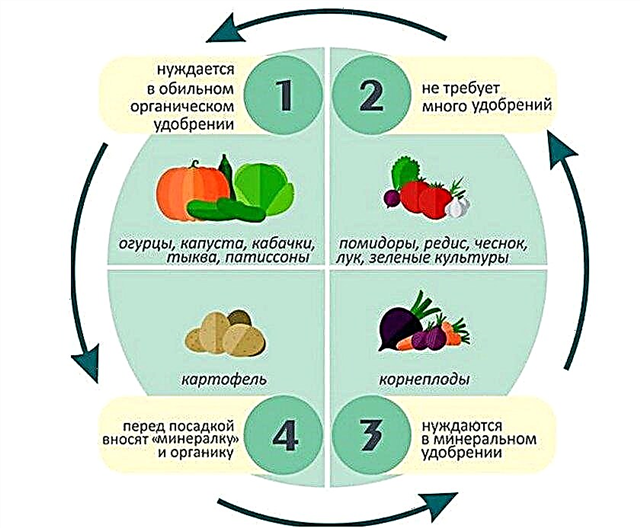
The soil in the garden can be prepared in the fall. For this, the earth is well loosened, a shovel is dug to the depth of the bayonet, enriched with mineral fertilizers, humus or compost.
For planting cabbage, areas that are regularly flooded as a result of frequent rainfall are categorically not suitable, since an increased level of soil moisture can rot the root system of the plant.
Did you know? There are even cabbage museums in the world. The most famous is the Gimchi Museum, located in the capital of South Korea. The institution got its name in honor of the main Korean dish, which is prepared from cabbage, with the addition of onions, garlic, spices and an original sauce based on shrimps and anchovies.
Transplanting seedlings in the open ground
Planting of seedlings in the soil is carried out 30–35 days after sowing seeds. As a rule, this period falls at the beginning, middle or end of May, depending on the climatic characteristics of the region. Landing measures should be carried out when the temperature indicators are fully stabilized, and the risk of night frost returning disappears.
The technology of planting sprouts is quite simple and boils down to the following steps:
- deepenings are made in the ground, into which the settled, warm water with a temperature of +18 ... + 20 ° С is abundantly poured;
- seedlings are planted in pits, according to the scheme 60 × 40 or 50 × 50, by the method of transshipment;
- the sprouts are covered with a small layer of nutrient soil, the surface is abundantly moistened.
 So that after watering on the ground a crust does not form, it is slightly loosened. Experts advise to carry out the planting of the material in cloudy weather, so that it does not take
So that after watering on the ground a crust does not form, it is slightly loosened. Experts advise to carry out the planting of the material in cloudy weather, so that it does not takeCabbage care
Caring for a hybrid Krautkaiser is quite simple, however, it requires compliance with some basic agrotechnical rules that relate to watering a crop, fertilizing it and treating it from pests and ailments.
Watering and feeding
Cabbage is a water-loving plant that needs high-quality abundant watering throughout the entire growing season. Seedlings, in the first weeks after planting, need to be watered 2-3 times a week, focusing on drying out the top soil layer and weather conditions. It is very important to provide moisture to the vegetable during the formation of heads of cabbage, since large fruits can form only with a constant soil moisture of about 80%.
Plant irrigation measures are carried out in any convenient way: from a watering can, by means of a drip or rain installation. The main thing is that during irrigation water does not fall on the leaves, otherwise, under the influence of sunlight, burns may appear on them.
Important! During the ripening of heads of cabbage, watering is stopped, since increased moisture can cause cracking of the heads.
It is equally important to provide cabbage with the necessary amount of nutrients. To get a quality crop, you should feed the hybrid several times during the season:
- at the initial stage of the growing season, nitrogen-containing preparations, for example, ammonium nitrate powder diluted with water, are introduced under the bushes. Such top dressing will enhance the growth and development of green mass;
- the second portion of nutrients is introduced in the head formation phase. In this case, use a solution of: 10 l of water, 5 g of superphosphate, 4 g of urea and 8 g of potassium sulfate. About 2–2.5 liters of the drug are added under one plant.
You can dust the soil around the bushes with wood ash and cover with a layer of mulch.
 In the future, when the head of cabbage is fully formed, there is no need to feed the culture
In the future, when the head of cabbage is fully formed, there is no need to feed the culture
Loosening and weeding
Regular soil care on the beds of cabbage is considered one of the main aspects of successful fruiting of the crop. Gardeners advise always to keep the soil around the bushes in a clean and tidy condition. For this, it is necessary to regularly carry out measures to destroy weeds. It should be noted that the Krautkizer hybrid has the ability to suppress weeds, so weeding will not have to be done often.
But loosening should be carried out regularly, ideally - every week, before watering. A similar procedure allows you to:
- enrich the soil with valuable vitamins and minerals and oxygen;
- activate the growth of greenery;
- create comfortable conditions for the full development of the root system.
 The first loosening must be performed to a depth of 4-6 cm. With further loosening, it is necessary to go deep into the soil by 8-10 cm
The first loosening must be performed to a depth of 4-6 cm. With further loosening, it is necessary to go deep into the soil by 8-10 cm
Hilling bushes
Strengthen the root system of the vegetable, and thereby contribute to better productivity, allows the hilling procedure, which must be carried out after the formation of small heads of cabbage. Events are advised to be done after rains, by raking to the trunk, to the level of the first full leaves, a small amount of soil. During hilling, the earth between the rows should be sprinkled with wood ash. The second time the procedure is repeated 2-3 weeks after the first.
Pest and Disease Control
As noted earlier, the Krautkizer hybrid has medium immunity, can withstand fusarium, pinpoint necrosis, bacteriosis, gray or white rot, but often affected by such ailments as:
- keel: fungal disease, the detrimental effect of which extends to the root system of the plant, as a result of which growths form on it;

- downy mildew: affects almost all parts of the culture. White spots form on the underside of the leaf plate, which subsequently grow over the entire surface.
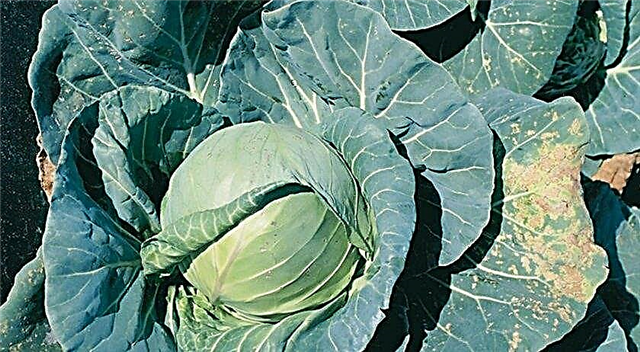
Among the pests, the greatest danger to the hybrid is aphids, fleas and cabbage fly. To avoid crop loss due to the negative effects of parasites, it is recommended to regularly spray the bushes with solutions of modern insecticidal preparations.
Did you know? Our ancestors planted seedlings of cabbage in open ground on a certain date - May 18, the day of Arina-nursery. According to vegetable growers, planting on this day was a guarantee of good and rich harvests.
For the prevention of ailments, it is necessary to follow simple measures:
- in time to carry out loosening of the soil;
- to prevent strong growth of weeds;
- control the balance of soil moisture;
- disinfect the plant with fungicides and insecticides.

Features of harvesting and storage of crops
The Krautkizer is a mid-late variety whose fruit collection starts in September. Harvesting should be carried out in warm, dry and sunny weather according to this algorithm:
- carefully dig out cabbage with a shovel, without cutting off the heads, the roots and cobs are cleaned of soil;
- small, damaged, poorly formed heads are sorted and cleaned. As a rule, they go for recycling;
- healthy, without visible damage and rot, dense heads of cabbage are selected for preservation for the winter.They are stored in previously prepared wooden or plastic boxes, or laid out on a layer of straw;
- picked fruits, to ensure a longer shelf life, leave on the bed until the upper leaves are attached.
For long-term storage, all cabbage must be wrapped with cling film, placed in boxes and transferred to a dry, cool, well-ventilated place with stable temperatures of 0 ... + 3 ° C and humidity 80–90%. Under such conditions, heads of cabbage will be able to lie without loss of taste and aesthetic qualities for 4–7 months.
The cabbage of the described variety has an excellent taste, juicy and crispy structure, therefore it is most often used for pickling and fermentation. It is great for fresh use, as part of salads, various hot dishes, as a filling for pies. The vegetable contains an increased concentration of vitamin C, which is why it is used in folk medicine for the prevention and treatment of colds.
Hybrid Krautkaiser is perfectly adapted for cultivation in the temperate regions of our state. It is not too fastidious to the soil, quickly adapts to climate conditions, but for good fruiting it requires regular watering, timely soil care, protection from pests and parasites.



